In pictures: 116 years of US-Cuban relations
- Published
The US and Cuba have announced plans to normalise diplomatic and economic relations - marking a dramatic shift in a relationship that has been strained for more than half a century.
Here is the story of the two countries' entangled history, told through pictures.
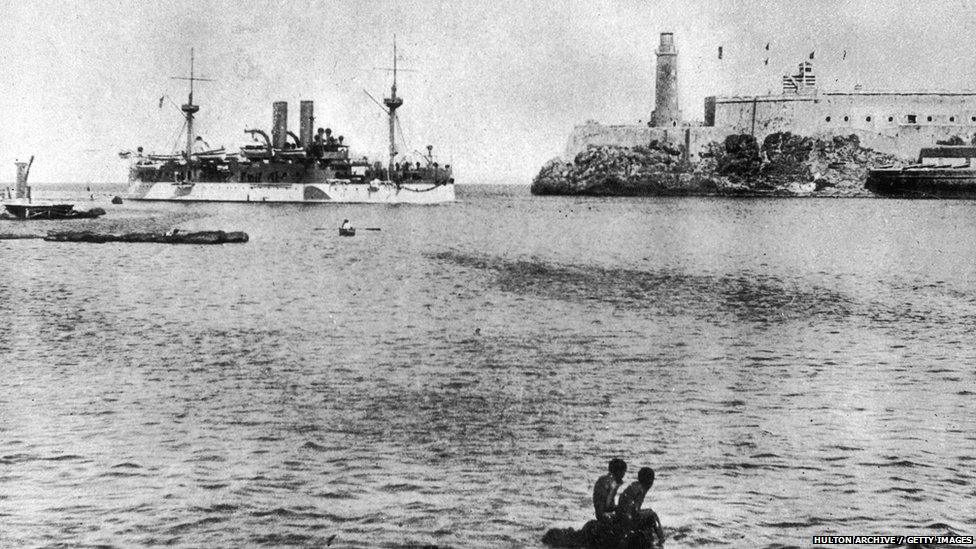
The US battleship Maine sails into Havana harbour in 1897, as Cuba fights for independence from its colonial power, Spain. The sinking of the USS Maine in 1898 is a trigger for the Spanish-American war, in which the US wins control of Cuba.

Cuba gains independence from the US in 1902. However, the US retains the right to intervene in Cuban affairs until 1934. In this image from 1935, Havana police detain a suspected opponent of the government of the time, which came to power in a coup led by Fulgencio Batista.
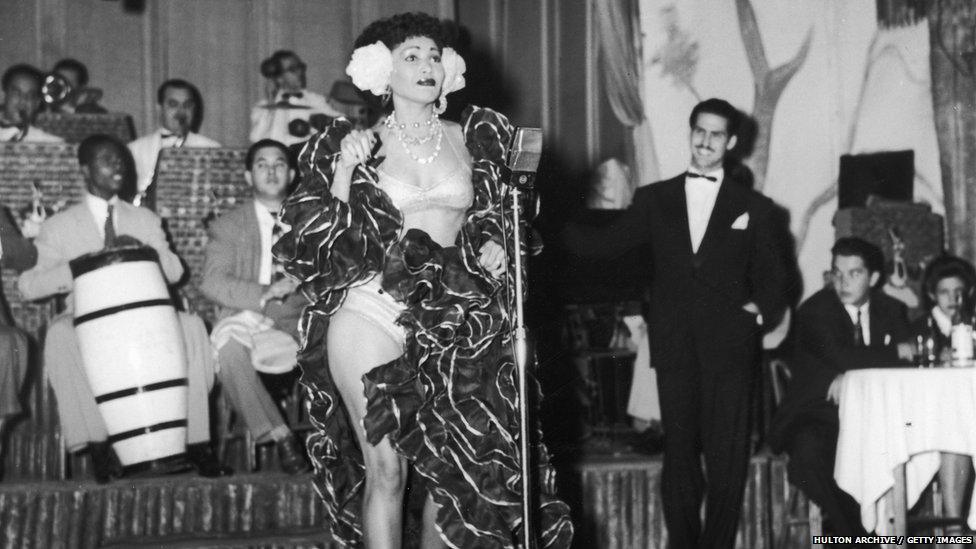
A rhumba dancer performs in a Havana club in the 1940s, as the Cuban capital's freewheeling nightlife draws visitors - and investors - from the US. In 1952, Batista comes out of retirement and takes power again, with US backing.
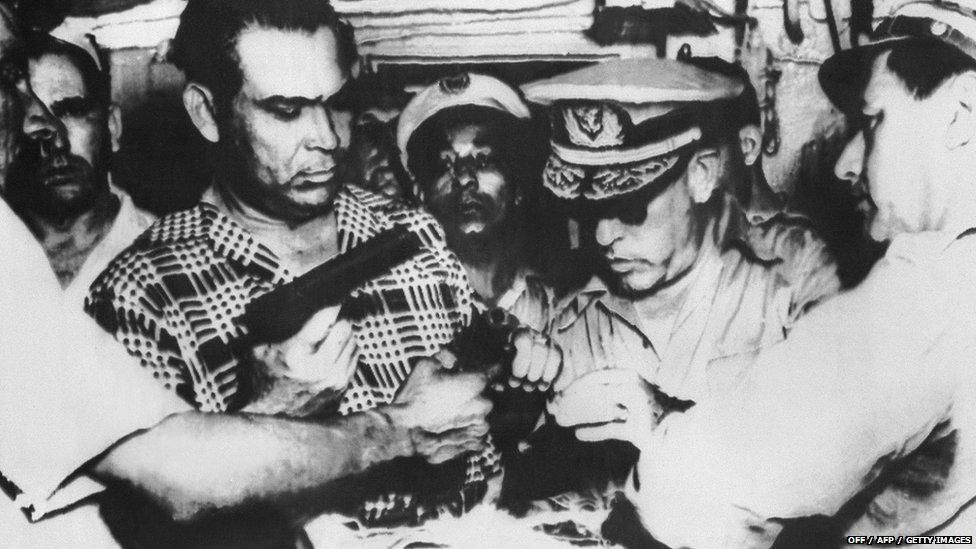
Many Cubans are unhappy with the Batista dictatorship. Here, the president, at left, inspects weapons seized in a failed uprising led by a young rebel named Fidel Castro.
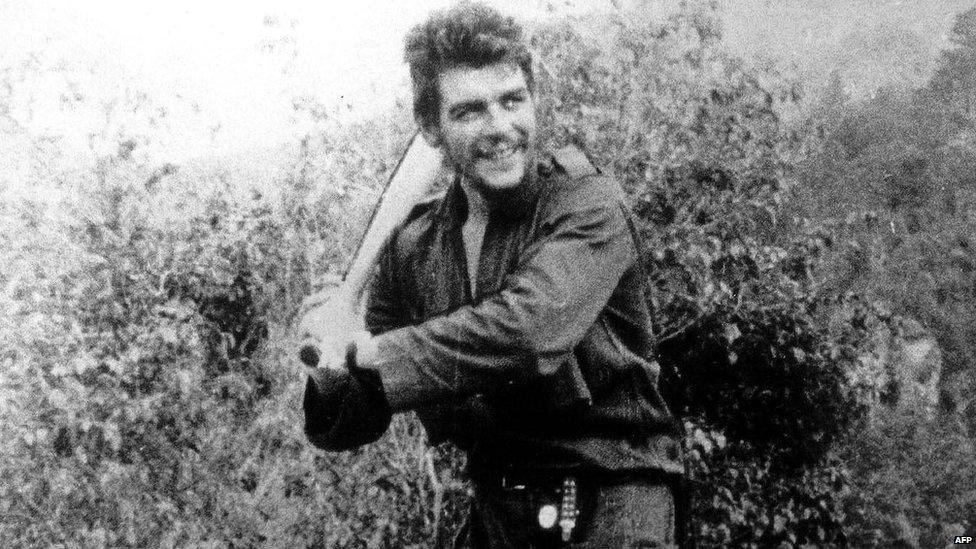
Teaming up with Argentinian revolutionary Ernesto "Che" Guevara, Mr Castro launches a guerrilla war against Batista. Relaxing in the rebels' base in the mountains, Guevara tries his hand at baseball - a sport that is still as popular in Cuba as it is in the US.
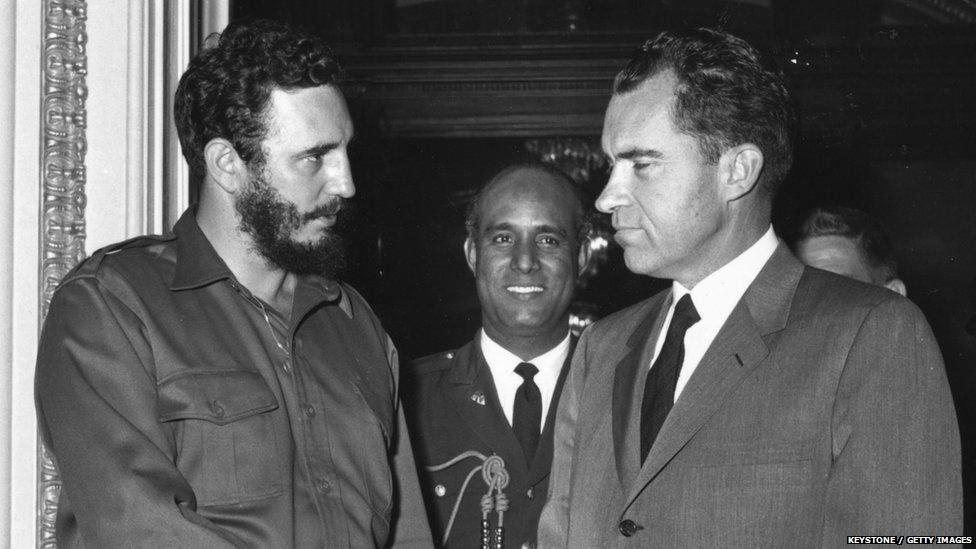
Mr Castro's rebels seize power in 1959, forcing Batista to flee. In the same year, Mr Castro meets US Vice-President Richard Nixon, on an unofficial visit to Washington.
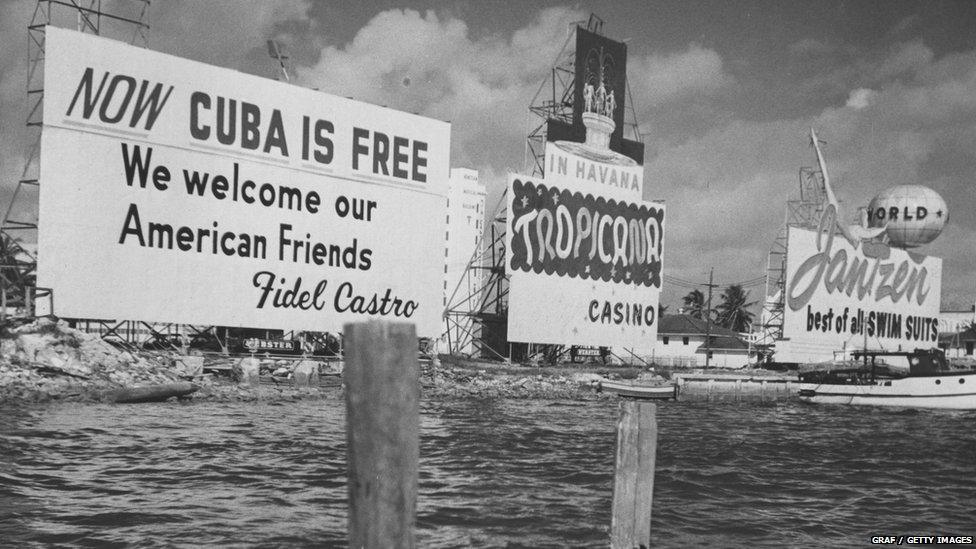
Nixon later writes that the US tried to steer Mr Castro in the "right direction". This sign in Miami harbour aims to reassure the US about the new government in Havana.
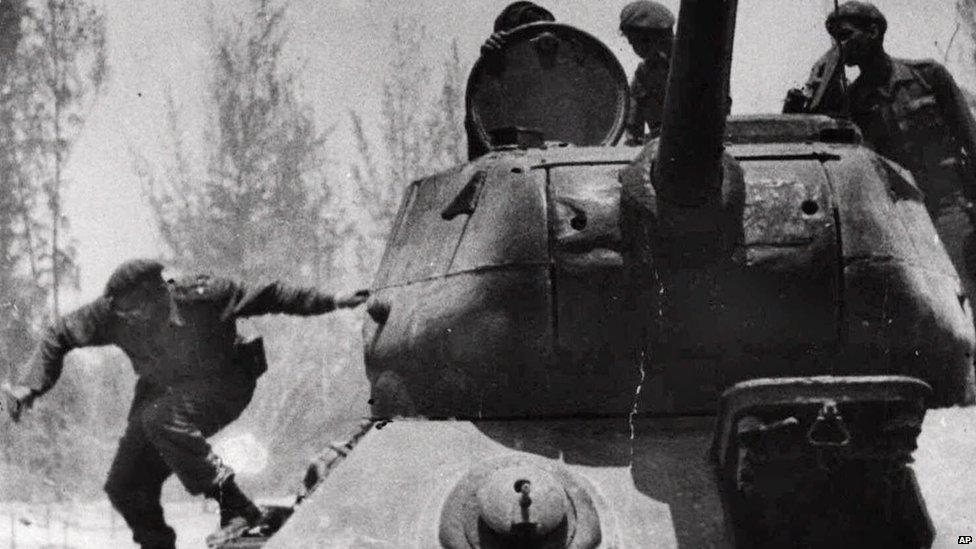
However, in 1960, Mr Castro nationalises US businesses in Cuba without compensation. The US breaks off diplomatic ties. In 1961, the US backs an abortive invasion attempt at the Bay of Pigs. Mr Castro, seen here leaping from a tank, leads the Cuban operation against the invaders.
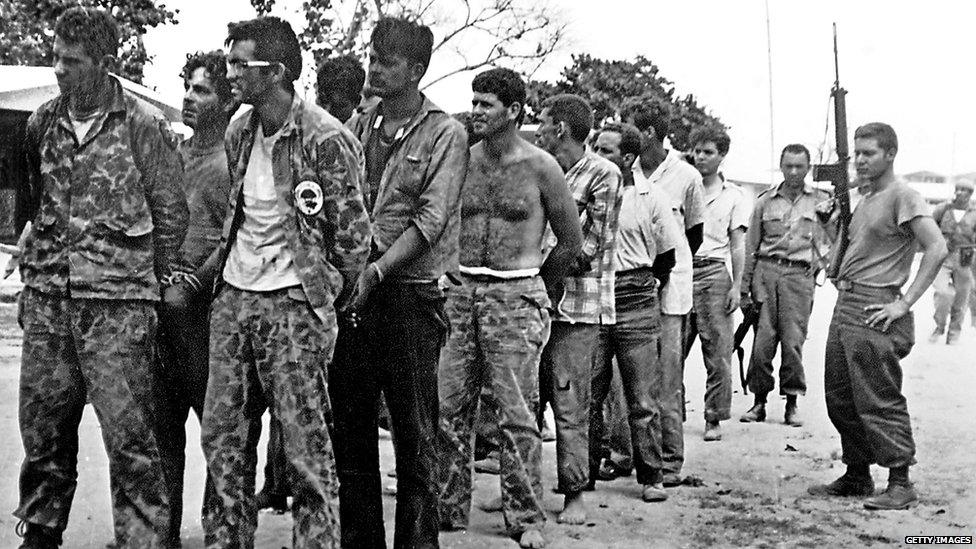
The Cuban exiles involved in the US-backed invasion attempt are captured. Mr Castro declares Cuba a communist state and allies it with the Soviet Union.
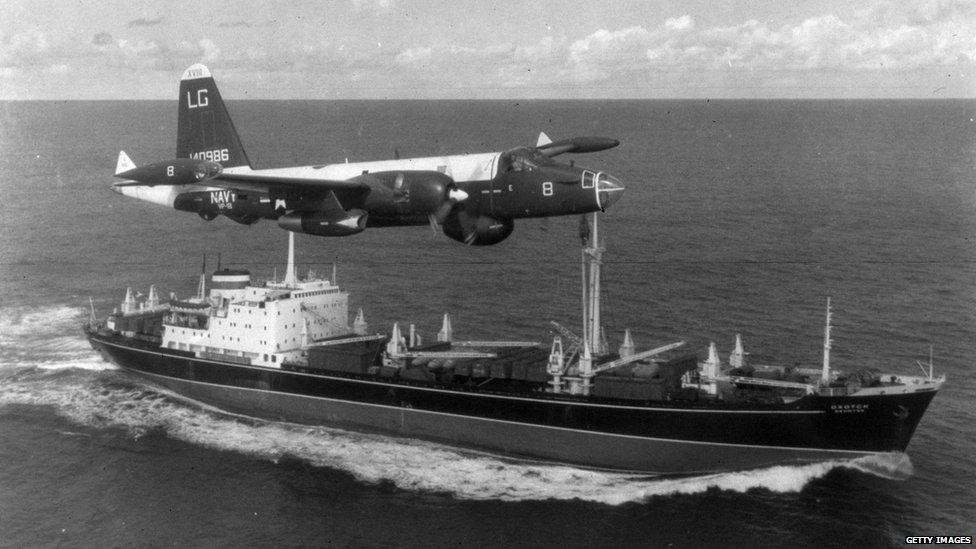
In 1962, Cuba agrees to permit the Soviet Union to deploy nuclear missiles on the island. This alarms the US, triggering the Cuban missile crisis - widely regarded as the most dangerous chapter in the Cold War. This image shows a US patrol aircraft following a Soviet freighter in 1962.
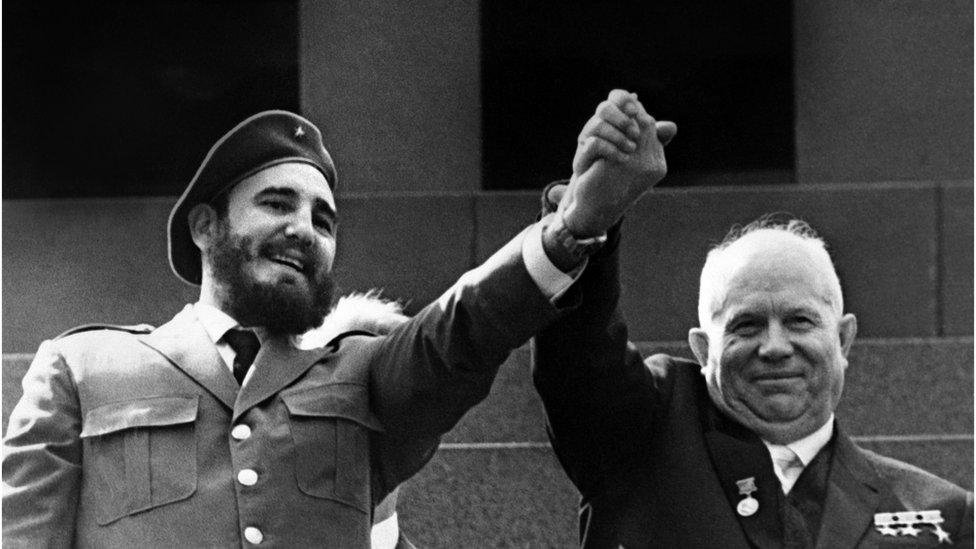
The missile crisis is eventually resolved peacefully. Cuba continues to build ties with the Soviet Union, with Mr Castro visiting Moscow in 1963, as a guest of the Soviet leader at the time, Nikita Khrushchev.
.jpg)
After the collapse of the Soviet Union, the US tightens a trade embargo on Cuba. Refugees from the island continue to make the dangerous sea crossing to Florida. Here, a Cuban woman bids farewell to her daughter on a beach near Havana. In 1994, the US signs a deal with Cuba to try to limit the exodus.
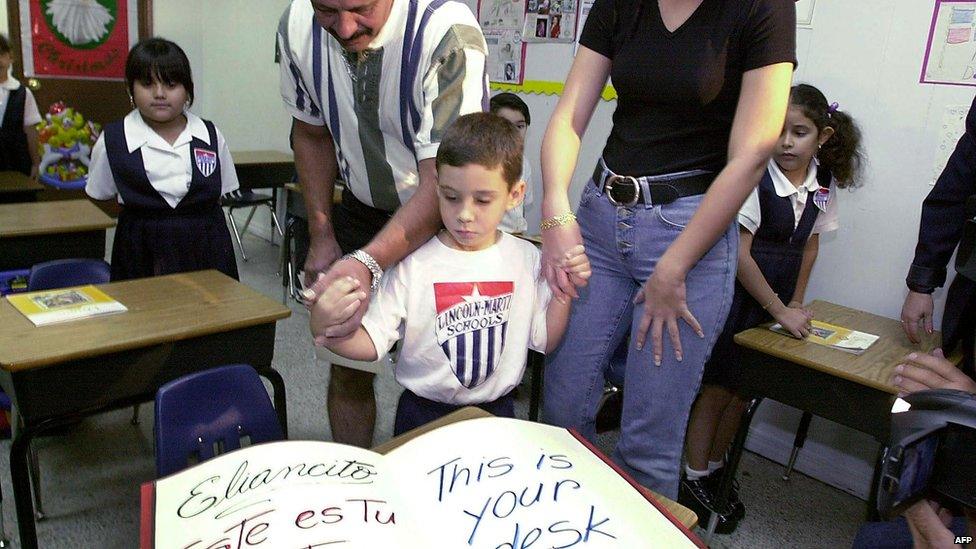
In 1999, Cuban exiles in the US campaign for Elian Gonzalez, a Cuban refugee boy rescued off the coast of Florida, to remain in America. He becomes a symbol of tensions between the US and Cuba - and eventually returns to Havana to be re-united with his father.
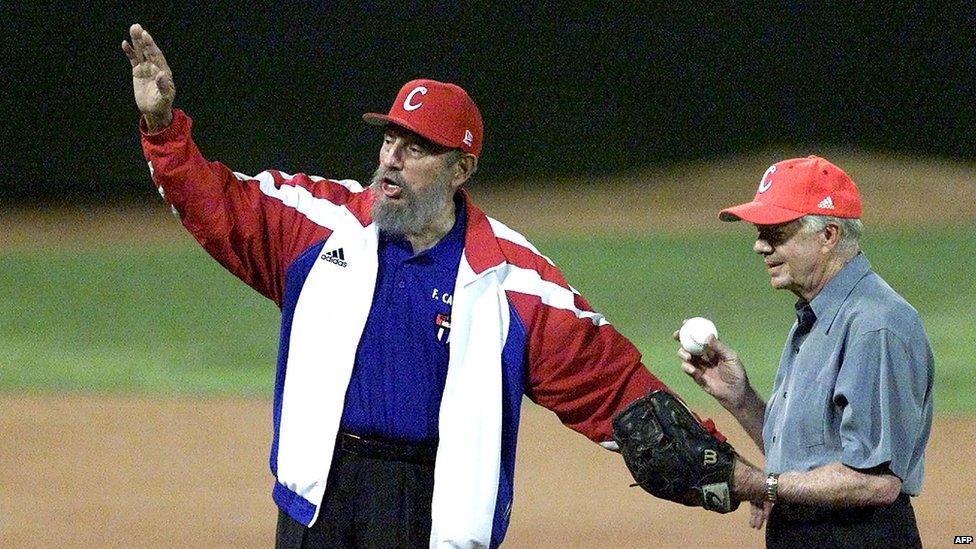
Relations sour further in 2002, when a US official accuses Cuba of trying to develop biological weapons. But there are also efforts to rebuild ties. Former US President Jimmy Carter, at right, is seen here with Mr Castro, visiting a baseball stadium in Cuba 2002.
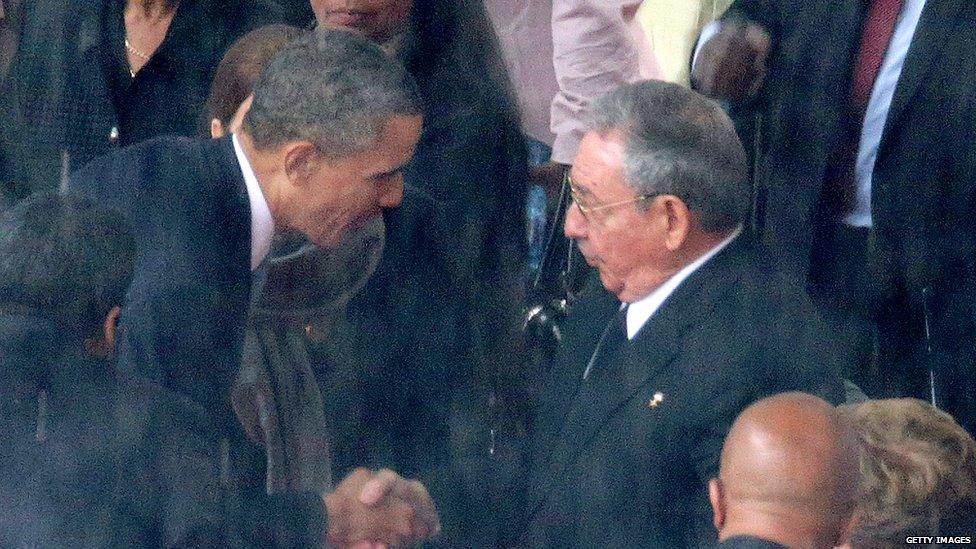
In 2008, both countries get new leaders. Raul Castro succeeds his brother, Fidel, in Cuba, and Barack Obama is elected to succeed President George W Bush in the US. While diplomacy continues behind the scenes, Mr Castro and Mr Obama surprise onlookers by shaking hands at the funeral of South Africa's former leader, Nelson Mandela, in 2013.
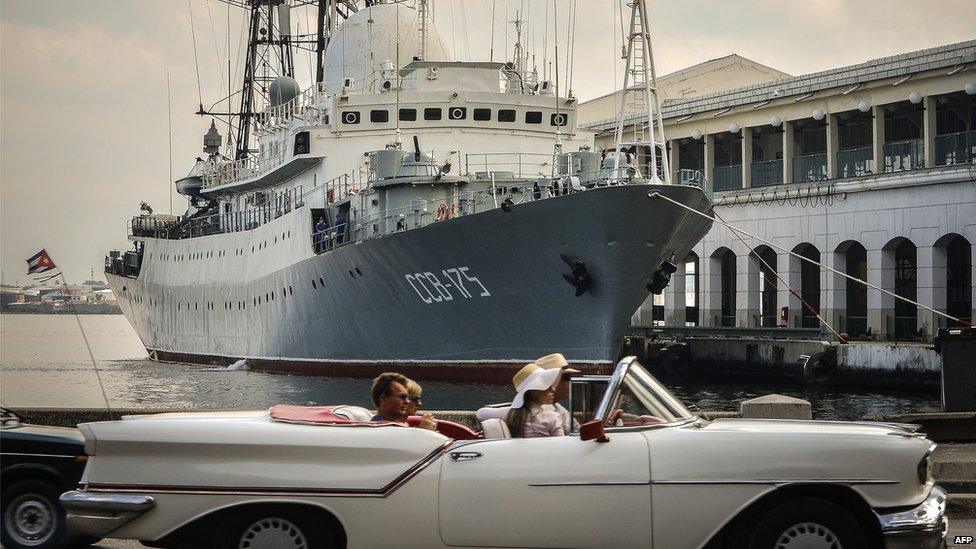
An exchange of prisoners in 2014 is followed by the announcement that Cuba and the US are to seek to normalise relations. At Havana harbour in 2014, the island's historic links to Moscow and Washington are symbolised by a vintage American car driving past a Soviet-era warship.